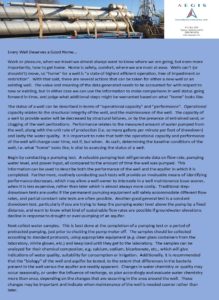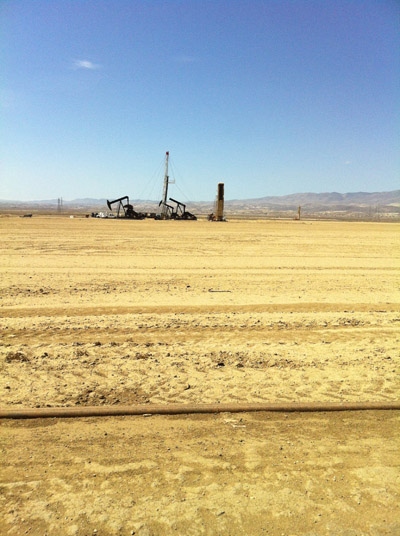 The Groundwater Planning Commission meeting was held on Tuesday, November 27, 2018 at the Lower Tule River Irrigation District headquarters in Tipton. The room was just about capacity and there was some fog on the way down. I was talking to a fellow the other day who was very excited about harvesting water from fog. I used to live on the Fresno River in Madera County and there were foggy nights where it was as quiet as the grave and the water dripped off the trees like rain. That was a good night for a fire in the stove and tall tales. There was a detour in front of the office, so Eric Limas, General Manager LTRID called the meeting a bit after 10:00 am.
The Groundwater Planning Commission meeting was held on Tuesday, November 27, 2018 at the Lower Tule River Irrigation District headquarters in Tipton. The room was just about capacity and there was some fog on the way down. I was talking to a fellow the other day who was very excited about harvesting water from fog. I used to live on the Fresno River in Madera County and there were foggy nights where it was as quiet as the grave and the water dripped off the trees like rain. That was a good night for a fire in the stove and tall tales. There was a detour in front of the office, so Eric Limas, General Manager LTRID called the meeting a bit after 10:00 am.
Limas reported hydrogeologist Tom Harder has proposed further studies on the area’s wells near  the Friant Kern Canal along the subsidence impacted area. Then the wells can be turned on and off and see where the problem lies. Dan Vink, Executive Director South Valley Water Association said that will be a very good start. The area could become a management area. Subsidence is occurring mainly in a big white area. Harder’s study already has groundwater flows figured in; finding the wells and their output will be plugged in. This will also help in developing transitional pumping rates.
the Friant Kern Canal along the subsidence impacted area. Then the wells can be turned on and off and see where the problem lies. Dan Vink, Executive Director South Valley Water Association said that will be a very good start. The area could become a management area. Subsidence is occurring mainly in a big white area. Harder’s study already has groundwater flows figured in; finding the wells and their output will be plugged in. This will also help in developing transitional pumping rates.
Vink showed some figures for transitional pumping. Limas worked out three scenarios with differing ramp downs; the safe yield is .29 a/f per acre with 1.03 a/f per acre surface supplies. Pixley ID’s safe yield is also estimated at .29 a/f but its average surface deliveries are only .23 a/f annually. Recharge adds .76 a/f for Lower Tule and .16 a/f for Pixley. There are different ways to put this together but the amount of 2.62 a/f of consumption was one outcome. The board will have to look at the price. Each time a scenario is plugged into the model costs $10,000. One grower said it’s like playing poker and another said it’s like solving a puzzle. The Pixley growers were especially concerned, as one might imagine. However, with projects and technology there is hope.
Speaking of projects; Limas showed yet more scenarios with projects like fallowing and land
retirement, increased recharge and additional conveyance. It felt like the consensus of the folks in the room was for running as many scenarios through the model. You can put what you want in the plan but the other five GSAs in the sub basin have to agree to it for it to pass. It was said Delano Earlimart ID is not  interested in transitional pumping and ready to fight it out. That could mean State intervention. However, if the subsidence on the FKC is resolved that could cause DEID to soften its stance on the matter. A plethora of policy decisions will follow the data acquisition and decisions on projects. One man said to take the water that would have gone to districts downstream from the subsidence and recharge the subsidence area. I seem to remember some bleak figures following that option; shut off all wells and flood the place every chance you can will take more than 10-years to stop the current subsidence rate. Hope I’m wrong.
interested in transitional pumping and ready to fight it out. That could mean State intervention. However, if the subsidence on the FKC is resolved that could cause DEID to soften its stance on the matter. A plethora of policy decisions will follow the data acquisition and decisions on projects. One man said to take the water that would have gone to districts downstream from the subsidence and recharge the subsidence area. I seem to remember some bleak figures following that option; shut off all wells and flood the place every chance you can will take more than 10-years to stop the current subsidence rate. Hope I’m wrong.
There were questions: should transitional pumping credits be transferred? carried forward? Fro how long? Vink said make sure the option chosen is a safety net and not a hammock. I thought that was funny but if anyone else did they kept it to themselves. Of course its their water we’re talking about and that can cool the jocularity. There was a discussion of transferring water out of the GSAs. If I understand currently there is no transfers outside of a GSA but there could be a situation in the future where water could be transferred within the sub basin. It was mentioned Porterville ID has been selling its CVP surplus and SGMA can’t prevent that. But giving folks or districts first right of refusal to purchase surplus surface supplies could be on the coordination agreement wish list. Westlands Water District is looking at a five-year rolling balance by each grower. Some years they can over-pump but on other years they have to under-pump or not pump to get back in balance; but if they don’t get back in balance there is a fine to discourage this from happening. The consensus was to allow transferring transitional pumping within a grower’s own property. These credits could be rolled over for five-years.
Should transitional pumping credits be allocated to assessed acres or irrigated acres? Before that question was fleshed out a lady said being too restricted could put more farms out of business than help. She advocated allowing transfers within the GSA regardless of property ownership. It was suggested if someone needed to flush salts on bare land there was no ET or consumption so they can pump all they want it the water is going back to the aquifer.
 The suggested base rate for transitional pumping was $300 per a/f. It seemed high to most folks and a tiered rate was more palatable. This amount can be adjusted. Vink said there could be tiers within the tiers. As the industry gets up to speed on this. Also, the money collected needs to go to improving ground water in the GSA. The $300 per a/f wasn’t carved in stone either. Exceeding the transitional pumping amount penalty was suggested to be $1,000 a/f plus loss of next year’s groundwater allocation (1.5 a/f for every acre foot over pumped.) This is all based on consumptive use and part of the five-year rolling total. No one will suddenly wake and find they’ve been pumping $1,000 a/f for the past week.
The suggested base rate for transitional pumping was $300 per a/f. It seemed high to most folks and a tiered rate was more palatable. This amount can be adjusted. Vink said there could be tiers within the tiers. As the industry gets up to speed on this. Also, the money collected needs to go to improving ground water in the GSA. The $300 per a/f wasn’t carved in stone either. Exceeding the transitional pumping amount penalty was suggested to be $1,000 a/f plus loss of next year’s groundwater allocation (1.5 a/f for every acre foot over pumped.) This is all based on consumptive use and part of the five-year rolling total. No one will suddenly wake and find they’ve been pumping $1,000 a/f for the past week.
Projects
Limas said there was a list of project ideas from the last meeting; under water supply development – Lake Success Enlargement, Homeland Canal Connection and the Friant Kern Pump-back Program. Land use changes were: recharge and retirement. Vink had an Excel Sheet set up to help figure out how much a project will cost in money and net water yield. He called it the Dashboard. For instance you can adjust the percent of land retirement and see how much water supply can be generated and at what cost. Vink gave a SWAG – scientific wild ass guess, of what the cost per acre to fallow, retire and recharge ground will be. Since we’re using the “a” word this turned into a LAM – long ass meeting. Two and a half hours and we’re on agenda item three. The time hasn’t been wasted, don’t get me wrong. Just a lot to discuss.
Two projects were specifically mentioned; the Homeland Canal and the West Main Improvements. Both of them will cost more than $8 million each. It was interesting to find out the poorer land to the west is more desirable for habitat. Vink said he’s looking for “safe harbor” agreements from Fish & Wildlife. You don’t want to retire a portion of the farmland only to have endangered species wandering off of it onto your current farmland. Pixley ID is in a tougher spot than Lower Tule. But it’s also closer to the current wildlife habitat, conveniently called the Pixley Wildlife Refuge. Limas said there is a project to the west in the Tri County Area going on. Although there have been unpleasant wrestling matches between the two places they put the stinky eyes away and holstered the guns until SGMA gets straightened out. And that was pretty much that.
DISCLAIMER OF RESPONSIBILITY; Waterwrights.net strives to provide his clients with the most complete, up-to-date, and accurate information available. Nevertheless, Waterwrights.net does not serve as a guarantor of the accuracy or completeness of the information provided, and specifically disclaims any and all responsibility for information that is not accurate, up-to-date, or complete. Waterwrights.net’s clients therefore rely on the accuracy, completeness and timeliness of information from Waterwrights.net entirely at their own risk. The opinions expressed in this report are those of the author and do not represent any advertisers or third parties.
ALL RIGHTS RESERVED. Copyright 2018 by Don A. Wright
SGMA The Sustainable Groundwater Management Act of 2014 calls for the formation of Groundwater Sustainability Areas within Basins and Sub-basins to develop Groundwater Sustainability Plans.
































